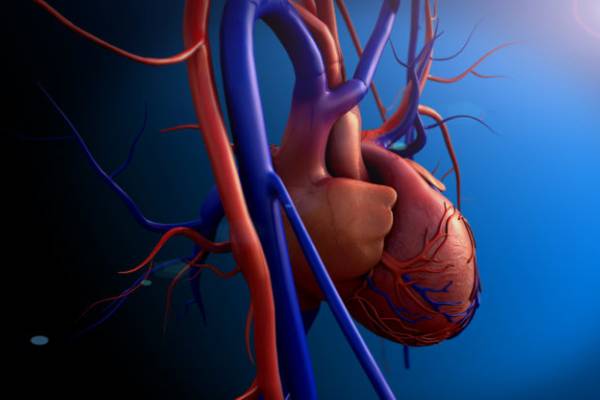
Heart disease is a term that is used to describe that something is interfering with the regular process of the heart. Most cases of heart diseases take place due to negligence of risk factors like obesity, hypertension(high blood pressure), diabetes, alcohol consumption, smoking, consuming high saturated fats, and so on. Heart disease can be controlled to some extent, but if proper care is not taken, the person might suffer from either a cardiac arrest or complete heart failure.
To understand why do diseases take place in the heart, it is important to understand the heart and its functions.
The Heart And Its Functions
Types Of Heart Diseases
Affects those arteries that are present in the legs, arms, neck, and kidneys. The arteries that get influenced are the femoral artery(thigh), radial artery(forearm), brachial artery(upper arm), and so on. Peripheral artery disease mostly impacts the legs, resulting in the occurrence of common symptoms called intermittent claudication, where sharp pain is experienced in the calf muscle. Other symptoms include reduced pulse in the feet, numbness of toes, ulcers on the affected limb that do not heal easily, etc.
Impacts arteries that supply blood to the heart. This includes narrowing of the arteries or reduced blood flow to the heart muscle, causing the heart muscle to die. Symptoms include chest pain, shortness of breath, swelling of legs and ankles, skin turning grayish-blue, etc.
Refers to a series of diseases influencing the heart muscle. In some forms of cardiomyopathy, the heart muscle or the ventricles enlarge or stiffen. It can be a result of risk factors like consumption of alcohol, infections, genetic mutations, etc
Arrhythmias refers to irregular heartbeats where the heart either beats too fast(tachycardia) or the heart beats very slow(bradycardia). It causes due to defects in the electrical conduction system of the heart.
Refers to valve disorders. Either there is a narrowing of the valves or the valves are not able to close properly after receiving blood, causing leakage(regurgitation).
Refers to inflammatory diseases in the valves. Its first symptom includes throat infection by the streptococcus bacteria. If left untreated, it causes fever, joint pain, etc.
Caused either due to genetic mutations or environmental factors. If caused by genes, it results in disorders like Turner's syndrome, Holt-Oram syndrome, Di George syndrome, Noonan syndrome, Alagille syndrome. If caused due to environmental factors, causes disorders in the infant are caused due to unhealthy practices carried out by the mother like alcohol consumption, smoking, antidepressants, and so on.
Risk Factors Contributing To Heart Disease
Sudden Cardiac Accidents
Symptoms, when left unnoticed, may result in cardiac accidents like:-
Dr. Swapnil Mate's Cardiology clinic specializes in treating heart diseases and identifying the signs and symptoms that contribute to a possible heart attack. Their cardiology team is trained to eradicate the risk factors that hamper the cardiac health of the patient. Consult Dr. Swapnil Mate for the best medical assistance.
